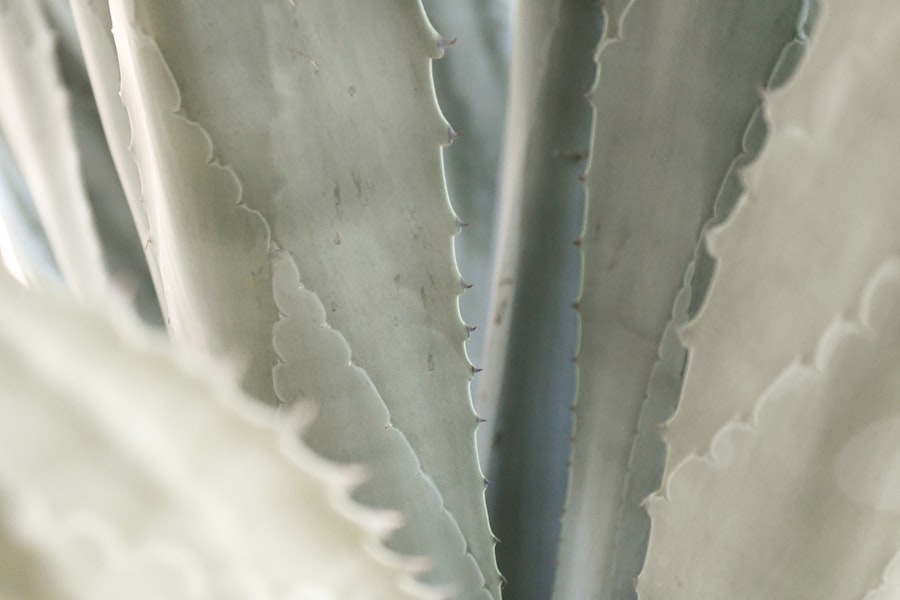When you decide to epilate, you may find yourself dealing with an unwelcome side effect: bumps on your skin. Understanding the causes of these bumps is crucial for preventing them in the future. One of the primary reasons for post-epilation bumps is irritation.
The process of pulling hair out from the root can cause trauma to the skin, leading to redness and swelling. This irritation is often exacerbated if your skin is sensitive or if you have recently shaved or waxed, as these methods can leave your skin more vulnerable. Another common cause of bumps after epilating is ingrown hairs.
Additionally, if you have not exfoliated properly before epilating, dead skin cells can clog hair follicles, increasing the likelihood of ingrown hairs and subsequent bumps.
By understanding these causes, you can take proactive steps to minimize their occurrence.
Key Takeaways
- Bumps after epilating can be caused by ingrown hairs, irritation, or sensitivity to the epilator
- Preparing your skin for epilation by exfoliating and moisturizing can help prevent bumps
- Choosing the right epilator for your skin type, such as a sensitive skin or wet/dry epilator, can reduce the risk of bumps
- Proper techniques for epilating, such as holding the skin taut and moving the epilator against the direction of hair growth, can prevent bumps
- A post-epilation skincare routine including gentle cleansing and moisturizing can help avoid bumps
Preparing Your Skin for Epilation
Preparation is key when it comes to achieving smooth skin through epilation. Before you even think about picking up your epilator, you should focus on cleansing and exfoliating your skin. Start by taking a warm shower or bath to open up your pores, which can make hair removal easier and less painful.
Use a gentle exfoliating scrub or a loofah to slough off dead skin cells, which will help prevent ingrown hairs and allow for a smoother epilation process. After exfoliating, ensure that your skin is completely dry before you begin epilating. Moisture can make it more difficult for the epilator to grip the hair effectively, leading to a less efficient hair removal process and potentially more irritation.
You might also consider applying a soothing lotion or gel that contains ingredients like aloe vera or chamomile to calm your skin before you start. This preparation will not only enhance your comfort during the process but also contribute to better results.
Choosing the Right Epilator for Your Skin Type

Selecting the right epilator is essential for minimizing bumps and ensuring a comfortable experience. Different epilators are designed for various skin types and hair textures, so it’s important to choose one that suits your needs. If you have sensitive skin, look for an epilator that features a built-in massaging function or one that is specifically designed for delicate areas.
These models often come with attachments that can help reduce discomfort and irritation. Additionally, consider the type of hair you are dealing with. If you have fine hair, a less powerful epilator may suffice, while coarser hair may require a more robust device.
Some epilators also come with different speed settings, allowing you to adjust the intensity based on your comfort level. By taking the time to choose an epilator that aligns with your skin type and hair characteristics, you can significantly reduce the chances of experiencing bumps after epilation.
Proper Techniques for Epilating to Prevent Bumps
| Technique | Effect |
|---|---|
| Exfoliate before epilating | Prevents ingrown hairs |
| Hold skin taut while epilating | Reduces risk of bumps and irritation |
| Use a gentle, steady motion | Minimizes skin irritation |
| Apply a soothing lotion after epilating | Calms the skin and reduces redness |
The technique you use while epilating can greatly influence the outcome and whether or not you experience bumps afterward. One of the most important tips is to always epilate in the direction opposite to hair growth. This technique helps to pull the hair out more effectively and reduces the risk of breakage, which can lead to ingrown hairs.
Additionally, holding your skin taut while epilating can minimize discomfort and irritation, allowing for a smoother experience. Another effective technique is to work in small sections rather than trying to tackle large areas at once. This approach allows you to focus on each section carefully, ensuring that all hairs are removed properly without causing excessive trauma to the skin.
It’s also advisable to avoid going over the same area multiple times, as this can increase irritation and lead to bumps. By employing these proper techniques, you can enhance your epilation experience and maintain smoother skin.
Post-Epilation Skincare Routine to Avoid Bumps
After epilating, your skincare routine plays a vital role in preventing bumps and ensuring your skin remains smooth and healthy. Start by applying a soothing lotion or cream immediately after epilation to calm any redness or irritation. Look for products that contain ingredients like aloe vera, witch hazel, or tea tree oil, as these can help reduce inflammation and promote healing.
In addition to applying soothing products, it’s essential to keep your skin moisturized in the days following your epilation session. Dry skin can exacerbate irritation and increase the likelihood of developing bumps. Consider using a gentle moisturizer daily, and if you notice any signs of ingrown hairs forming, incorporate an exfoliating product into your routine a few times a week.
This will help keep your pores clear and reduce the chances of bumps developing.
Home Remedies for Soothing Bumps After Epilating

If you do find yourself with bumps after epilating, there are several home remedies you can try to soothe your skin and promote healing. One effective remedy is applying a cold compress to the affected area. The cold temperature can help reduce inflammation and provide immediate relief from discomfort.
Simply wrap ice in a clean cloth or use a cold pack and apply it gently to the bumps for about 10-15 minutes. Another popular home remedy is using natural oils such as coconut oil or tea tree oil. Coconut oil has anti-inflammatory properties that can help soothe irritated skin, while tea tree oil is known for its antibacterial qualities that can prevent infection in case of ingrown hairs.
Dilute tea tree oil with a carrier oil before applying it directly to the bumps to avoid further irritation. These remedies can be effective in calming your skin and promoting a quicker recovery.
Professional Treatments for Stubborn Bumps
If home remedies fail to provide relief from stubborn bumps after epilating, it may be time to consider professional treatments. Dermatologists offer various options that can help address post-epilation issues effectively. One common treatment is laser therapy, which targets hair follicles and reduces hair growth over time.
This method not only minimizes future bumps but also provides longer-lasting results compared to traditional epilation. Another option is chemical peels or microdermabrasion treatments that can help exfoliate the skin more deeply than at-home methods. These treatments can remove dead skin cells and unclog pores, reducing the likelihood of ingrown hairs and bumps forming after epilation.
Consulting with a dermatologist will allow you to explore these options and find a treatment plan tailored specifically to your needs.
Tips for Maintaining Smooth, Bump-Free Skin After Epilating
To maintain smooth, bump-free skin after epilating, consistency in your skincare routine is key. Regular exfoliation is essential; aim to exfoliate at least once a week using gentle scrubs or chemical exfoliants containing alpha-hydroxy acids (AHAs). This practice will help keep dead skin cells at bay and prevent clogged pores that lead to ingrown hairs.
Additionally, consider adjusting your epilation schedule based on how quickly your hair grows back. Epilating too infrequently may lead to longer hairs that are more difficult to remove, increasing the risk of irritation and bumps. On the other hand, waiting too long between sessions may result in more ingrown hairs forming.
Finding a balance that works for you will help keep your skin smooth and healthy over time. By understanding the causes of bumps after epilating and implementing effective preparation techniques, choosing the right tools, and maintaining a diligent skincare routine, you can enjoy smooth, bump-free skin with confidence. Remember that everyone’s skin is unique; what works for one person may not work for another, so be patient as you discover what best suits your needs.
If you’re looking for more tips on preventing bumps after epilating, check out this article on inlaserhairremoval.com. They offer a variety of resources and information on hair removal techniques and skincare to help you achieve smooth, bump-free skin.
FAQs
What causes bumps after epilating?
Bumps after epilating can be caused by a few different factors, including ingrown hairs, irritation from the epilating process, or sensitivity to the hair removal method.
How can you prevent bumps after epilating?
To prevent bumps after epilating, it’s important to exfoliate the skin regularly to prevent ingrown hairs, use a gentle and moisturizing post-epilation product, and ensure that the epilator is clean and in good condition.
Are there any specific products or techniques that can help prevent bumps after epilating?
Using a mild exfoliating scrub or a product containing salicylic acid can help prevent ingrown hairs and bumps after epilating. Additionally, applying a soothing and moisturizing lotion or aloe vera gel after epilating can help reduce irritation and bumps.
Is there a certain way to epilate to minimize the risk of bumps?
To minimize the risk of bumps after epilating, it’s important to pull the skin taut while epilating and to move the epilator in the direction of hair growth. This can help reduce irritation and the likelihood of ingrown hairs.
When should I seek medical advice for bumps after epilating?
If you experience severe or persistent bumps, redness, or irritation after epilating, it’s important to seek medical advice. This could be a sign of an allergic reaction or infection that requires professional attention.




